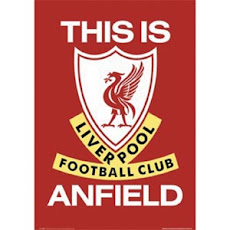Team Spirit
High-flying days with the Ateneo Cheer Dancers & Lifters
by rick olivares
High-flying days with the Ateneo Cheer Dancers & Lifters
by rick olivares
photo by aaron vicencio
To some they are window dressing to an Ateneo game. To others who still live in a bygone era, they are an eyesore and an affront to a sacred tradition. To practically everyone, they train in anonymity and for longer hours than any varsity team in school.
Welcome to the world of the Ateneo cheer dancer and lifter where they are their own best friends and where ankle sprains, broken bones, and hematomas are commonplace and are considered a badge of courage.
Mary Dizon, this year’s captain for the cheer dancers debunked the myth that one should have watched “Bring It On,” that film about cheerleading starring Kirsten Dunst, for one to be accepted into this unit of the Blue Babble Battalion. “Oh, it’s a lot easier than that,” laughed Dizon who was a cheerleader during her high school years at Holy Spirit.
Never mind the back flips or handstands, in order to be a cheer dancer and a lifter, one must possess gymnastic and dancing skills to go with a degree of athleticism. They must possess a passion for cheerleading and for sports and must be flexible and resilient because it is never easy juggling studies and going to games and practicing. Any social life has to take a backseat until the off-season. “If you’re all that and more, then welcome to the club,” said Jose Antonio “Toons” Canoy, the captain of the lifters.
This year, there are 34 men and women who have the cojones to be a part of this. They’d be a little more except that there are a couple that drop out every year due to stress, the hectic schedule, and omni-present heavy school load. “And there are your parents who question the long hours you spend in training,” said Jan San Juan, co-captain for the cheer dancers. “You have to work doubly hard because if your grades suffer then you’ll be forced to give it up. Kasi after all, slla nagbabayad ng tuition mo.”
Training begins as early as summer. At first, they run two kilometers for endurance and stamina after which they try out their stunts at least three times a week. The girls enroll in Club Gymnastica while paying their own way out of their own allowance. “Ah, that’s not counting transportation and food,” added Dizon.
Practically everyone thinks what they do is easy. You know -- do a cartwheel or two, throw in a few heavy set guys to throw up 100-pound girls 20-feet in the air (and catch them when gravity does its job), and shake their pom poms to Fabiliohs and hip hop music.
“It’s actually insulting that people have these misconceptions,” fumed Toons.
It is normal for them to receive queries of, “Why?” Rather than be philosophical about it, every cheer dancer or lifter proclaimed a love for the school and cheering for the home team. And just like any other varsity team --- yes they are considered as one – they follow a code of ethics and training.
Aside from dedication and a hectic regimen, every member follows a strict diet. “We have weigh-ins twice a week to make sure that we watch what we eat,” explained San Juan.
“No sweets as much as possible. Eat less salty food. Eat a lot of oatmeal to stay lean,” enumerated Dizon.
“No drinking,” said Toons as he delivered the coup de grace to collective groans from the cheer dancers. “When the season’s done there’ll be time for partying.”
In addition to practicing their routines during the halftimes of basketball games and cheering during other varsity tournaments (such as football and volleyball), they have to work extra hours for the Cheer Dance Competition, a major event in their calendar year.
“Unlike in basketball where the team can practice even if someone’s absent, in the cheer dancers and lifters’ case, if one is absent then they cannot do their routines,” pointed out Ricky Palou, the University Athletics Director. “So that says a lot about their commitment. And nobody knows that.”
“It’s a science,” described Toons about their work. “You have to match the lifters to the cheer dancer. It’s about weight and strength, positioning, angles, precision, chemistry, and trust.”
Trust that everyone will do his or her part in the routine. Trust that when the cheer dancers go flying in the air that the lifters will be there to catch them. Trust that everyone stays the long and difficult course of the season.
Training hours are long -- sometimes finishing at 11pm – and exhausting. “It’s not easy balancing all that with your schoolwork,” admitted Dizon. “Sometimes, you’re so tired that you just want to sleep. So we find the time to study and sleep between breaks and whatever free time we might have.”
While athletes in the main varsity sports are cut some slack when it comes to school requirements during the season, members of the Blue Babble Battalion (including all its auxiliary units) have no such benefit.
“But we’re not complaining,” pointed out Toons. “It’s what we signed up for. And if we help the team and the school to victory, we give the Ateneo crowd something to cheer and clap for, and when the girls fly high then that’s good enough a reward for us.”
Author's Note: Thanks to Ralph Aligada & Al Neri. And to Mary, Jan & Toons. Good job as always.










No comments:
Post a Comment